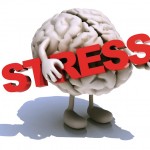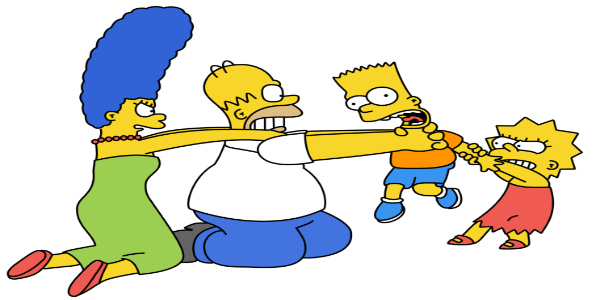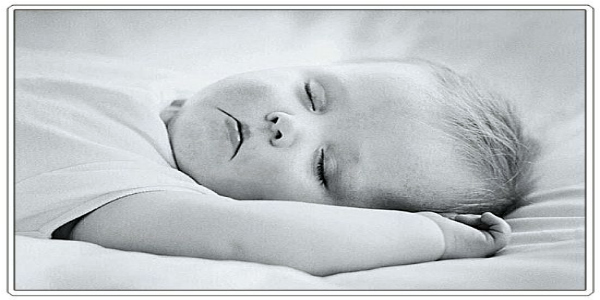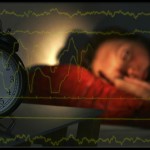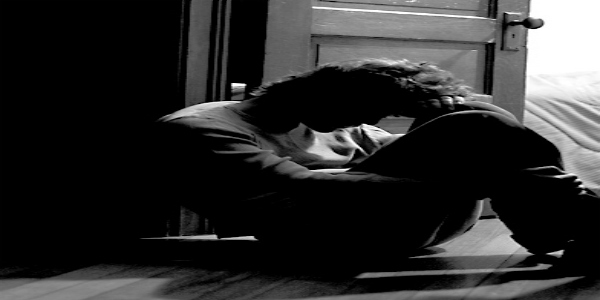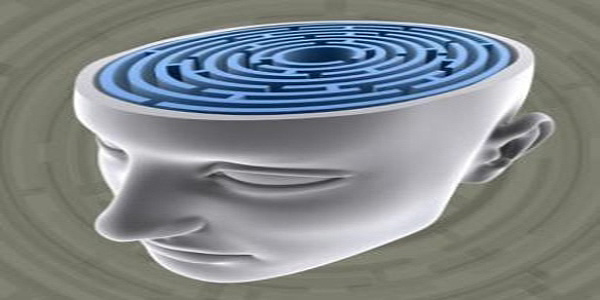هل العقل السليم في الجسم السليم
بدون تردد و بكل تأكيد نعم … فبرغم قدم هذه الحكمة و النصيحة الغالية إلا أن الطب النفسي وعلم النفس لم يهتم بالدراسة الفعالة لها إلا منذ 20 سنة فقط حتى خرج علينا علما قائما بذاته و هو ” علم النفس الرياضي” و هو آخذ في التطور عاما بعد عام حتى وصلنا الآن لم يمكنا أن نطلق عليه العلاج النفسي الرياضي ..
علم النفس الرياضي
انه فرع جديد من فروع علم النفس يهتم بالصحة النفسية و الجسدية معا و يدرس المتغيرات النفسية و الصحة البدنية ويحاول اكتشاف العديد من القضايا مثلا هل هناك علاقة بين سلوك الفرد و أفكاره و مشاعره مع الحالة البدنية له ومدى لياقته العضلية و الجسدية … وهل هناك دور لتحسين الحالة النفسية للفرد عن طريق تحسين الحالة البدنية

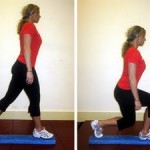
لكل علم قصة
الحياة العصرية وراء بزوغ هذا العلم و تطوره السريع فلم تكن البدانة مشكلة حتى منتصف هذا القرن و كذلك في العصور السابقة ولكن اختلفت مقاييس الجمال الآن فكل النساء وأغلب الرجال يتمنون الرشاقة ربما تشبها ببطلات وأبطال السينما المعاصرين فجميعهم مفتونين العضلات و الأجسام وظهرت فنون عديدة على رأسها فن الباليه الذي بهر الناس و الشعوب برشاقة الفنانين القائمين به و الذي كان له أكبر الأثر في تغير الصورة لدى الناس عن عناوين الجمال ولكن كيف نأتي بالرشاقة ………!في نفس الوقت تظهر أنواع من الأطعمة ومن اللحوم و الدجاج مربى على الهرمونات و مسمن في أقصر وقت وأنواع أخرى عديدة من نشويات و دهون مخبأ طعمها الحقيقي الواهي تحت تل من التوابل و البهارات إلى آخر ما يطلقون عليه الأكلات السريعة أو أكلات (التبك أواي) لكي تلتهمها في دقائق معدودة فهي مناسبة لروح العصر الحديث ذو الإيقاع السريع حتى ظهرت أجيال كاملة من الشباب لا يعرفون طعم الدجاج أو اللحوم الحقيقي و لكنها لن تمضي بسلام فسوف تترك هذه الأطعمة كم من الشحوم لن يكفيك عشرات من الساعات الرياضية لكي تزيلها و أين هذه الأوقات الرياضية إذا كانت الحياة تدور من باب السيارة إلى باب المصعد و كل شئ بالريموت كونترول … لا تتحرك و لا تفعل شئ .. باب السيارة بالريموت ..النافذة بالزر .. جهاز التكييف.. المروحة .. التليفزيون كل شئ من مكانك .. الأبواب في كل مكان إلكترونية تفتح و تغلق تلقائيا دون أدنى عناء وعضلاتنا لا مجال لاستخدامها فتضمر و أجسادنا تترهل و المدنية و التكنولوجيا تخرب في أجساد البشر وتتنافس في تقديم كل جديد بدون مجهود حتى أدوات الرياضة الحديثة تعلن عن نفسها بدون استحياء ..لا تتحرك سيهتز جسدك !!.. جهاز يحرك الساقين و أنت مستلق بدون عناء وآخر للتدليك و ثالث لعضلات البطن و كلها وأنت مستريح كيف ؟! ..والمحصلة مزيد من الاسترخاء وبالتالي مزيد من أمراض القلب و الصدر فكل هذه العضلات البشرية خلقت للعمل و ليس للراحة ويخرج جيل بعد جيل لايعرف للحركة طريق و يتبرم مع أدنى مجهود فيطلب السيارة الفارهة المريحة و كل سبل الحياة التي تجعله ساكنا و تتكاسل العقول و يتوقف الإبداع! .. و يجد الفرد نفسه حائرا أمام أبسط المشكلات و تختفي صفات حميدة كانت في آبائنا وأجدادنا كالصبر والجلد و التحمل فالمدنية والقفزة التكنولوجية سببت و هن الإنسان و ضيق المشاعر وسهولة الكآبة والقلق أيضا !
لكل فعل رد فعل
و هكذا كان الصراع فان نفس العصر الذي دع للاسترخاء و التهام ما لذ و طاب من فنون الطبخ والطهي وأشهى الطعام ينادي وينشد الجمال و يضع معياره الأساسي في الرشاقة و تناسق العضلات فنجوم السينما و المشاهير رياضيين وهم أكثر من تسلط عليهم الأضواء وأكثر من يحب أن يحذو الشباب حذوهم ويسير على نفس الدرب فظهرت فكرة الأندية الصحية وانتشرت في كل مكان و في غرفة صغيرة وأحيانا ضيقة حاول أن تحرك عضلاتك ( الإيروبيكس) .. لتصعد و تهبط على درجة السلم مئات المرات أو تبدل القدمين على الدراجة الثابتة وتحرك يديك إلى أعلى و أسفل والى الأمام و الخلف بكل الطرق بحيث تشمل كافة العضلات التي لا تستعمل في الحياة اليومية حتى لا تضعف و تتراكم عليها الشحومات والدهون أي بإيجاز تقوم بالحركات التي كان يجب عليك أن تقوم بها ..ولما كانت سمة العصر اختفاء الصبر فالكل في عجل و الكل يود أن يرى ثمرة التمرين في أسرع وقت انتشرت بين الشباب حبوب و هرمونات و منشطات قد تساهم في سرعة ظهور تناسق عضلاتهم برغم مما لها من أثر ضار
حان وقت الرياضة



هذا هو الوضع الذي نحياه الآن ولذا أصبح على كل فرد منا أن يمارس نوع من الرياضة و إلا الخسارة جسيمة وهي ليست خسارة الأبدان فحسب بل خسارة العقول أيضا و نقصد بالعقول المشاعر و السلوك و الأفكار ؟
أثر الرياضة على الصحة النفسية؟


الرياضة تهذب المشاعر و هي المنفذ لأي عنف مكبوت لدى الفرد فالرياضة هي الصخرة التي تتحطم عليها سفينة الشهوات وهي أيضا تهذب السلوك فكل أسلوب رياضي له أخلاقياته و الفكر القيم الهادف يتوالد مع مشاعر سوية و سلوك قويم .. أذكر أحد مرضى الاكتئاب و كان يشغل منصبا كبيرا في شركته كان لا يستطيع حل أصعب مشاكل الشركة لديه إلا أثناء السباحة .. والرياضة كلمة مشتقة من التريض وهي تحمل في معناها البهجة و السرور ولذا فما ينصح به الطب النفسي الرياضي لأي من يسعى لممارسة الرياضة إلا يبدأ بما فيه مشقة عليه و لا يتسرع النتائج بل عليه بالتدريب المتدرج القليل المنتظم ويحاول أثناء التدريب أن يفكر فيما يسعده ثم إذا وصل إلى مرحلة منتظمة يبلغ فيها درجة من النشوى و السكينة وهذا هو المطلوب من الرياضة يحاول أن ينظر إلى مشكلة تؤرقه و سيندهش بالحل يأتي إليه!!
كيف؟
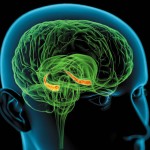
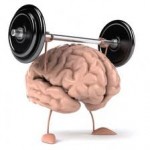
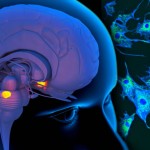
هذا الحديث غير مبالغ فيه فهذه هي رسالة الرياضة و التريض وهذا ما أثبتته الأبحاث العلمية فممارسة الرياضة يعمل على إفراز افيونات الجسم الداخلية أو ما نطلق عليه طبيا “الاندورفينات” و هي لها تأثير ساحر في تسكين أي آلام قد تكون بالجسم و تساعد على تنظيم عملية النوم وتمنح الثقة و الهدوء و الطمأنينة ويمكن الاستدلال على ذلك ببساطة انه في حالة إصابة أحدنا بنزلة برد أو أنفلونزا و اضطر لسبب ما ممارسة قدر من الرياضة ينشط بدنه و تختفي آلامه لبعض الوقت وذلك بسبب ما أفرز من الاندورفينات و حينما تتوقف عن التأثير بعد بضع ساعات تعاوده الآلام مرة أخرى
إدمان الرياضة ؟
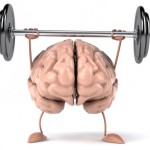
نعم أحدثت هذه الظاهرة بعض المشكلات حيث انه تعود الأمريكيون على رياضة الركض بصورة يومية و قد أصبحت ممتعة للعديد منهم بحيث انهم لا يستطيعون الاستغناء عنها وعند إصابة أحدهم بوعكة صحية تستلزم الراحة و ملازمة الفراش يجد صعوبة كبيرة في ذلك لأنه أدمن ممارسة الرياضة و ما لها من تأثير مهدئ عليه يوميا .
مع المرضى


ان الرياضة مع المرضى النفسيين لها أوقع الأثر في ضبط حالاتهم فهي تساعد على أقصى استفادة من الدواء الطبي وأيضا تحسن نمط و ايقاع التنفس لديهم و تذهب عنهم مخاوف مرضية وتساعد في تقليل الحاجة من الجرعة العلاجية للدواء بضبط النوم وتقلل من فرصة حدوث أعراض جانبية للأدوية على المريض ونحن بستشفى الطب النفسي بالكويت بدأنا بالفعل ادراج الرياضة في خطة علاج و تأهيل المرضى و أيضا نحن بصدد العمل على وضع برنامج تأهيلي متكامل يشمل أغلب المرضى ذوي الحالات المزمنة بالمستشفى
جوانب أخرى ..
إن علم النفس الرياضي ليس فقط يهتم بالجوانب الآنف ذكرها و لكنه أيضا يحاول أن يضع المواصفات النفسية للرياضيين و كذلك يحاول ايجاد التوصيات التي تصل بالأداء الرياضي البطولي إلى الحد الأقصى
أبحاث و النتائج ·
وقد قام الباحثون بعمل دراسات على الرياضيين حتى يتسنى لنا معرفة أو التنبؤ بقدرات اللاعب المشارك في لعبة رياضيه بذاتها ؟! .. وحاولوا ذلك عن طريق الاختبارات النفسية و لكن لم تأتي النتائج مرضية تماما و جاءت متباينة فإذا كان هناك فروقا واضحة بين الرياضيين وغير الرياضيين من حيث تناسق العضلات و الطول والوزن وخلاف ذلك أيضا هناك فروقا عقلية من حيث أنماط الشخصية فالرياضي المنافس يميل إلى السيطرة وحب السيادة ولدية قدرة على التحمل ونادرا ما يصاب بحالات كالقلق أو الاكتئاب وكأن ممارسة الرياضة طاردة لمثل هذه الحالات وبعض الرياضيين ممن يمارسون لعبة معينة مثل كرة القدم أو الهوكي يتمتعون بقدرة كبيرة على تحمل الآلام أكثر ممن يمارسون لعبة أخرى كالجولف مثلا وان كان هذا الفارق قد يأتي بالتدريب.

· قام علم النفس الرياضي بدراسة شاملة ساعيا لتحقيق أفضل نتائج للاعبين في البطولات .. كيف يمكن للاعب إعطاء أقصى و أفضل ما يستطيع ؟؟.. كيف يمكن شحنه نفسيا و استثارته و كيف يمكن تنمية الدافع لديه بالفوز؟؟ .. ووجد أن طريقة شحن اللاعب نفسيا تختلف من لاعب إلى آخر حسب انتماءات كل منهم و فكره و مبادئه و لكن وجد أن للشحن الزائد تأثير سلبي عند الأداء العالي المستوى ولذا فان علم النفس الرياضي يوضح كيف يمكن شحن اللاعبين مع الحفاظ على درجة تركيز ذهني عالية أيضا وهي تشمل تدريبات عالية المستوى و احتكاكات ودية قبل المنافسات الحقيقية و هناك جدل بين علماء النفس حول دور المشجعين والهتافات و الصراخ المستمر أثناء الأداء الرياضي فمنهم من يؤكد على أهميته ومنهم من ينفي ذلك و لكن الواضح انه وان كان له تأثير جيد و مثمر في شحن اللاعبين وقت الدفاع فان له تأثير سلبي في إضعاف تركيز اللاعبين وقت الهجوم على الخصم


· وقد أثبت أحد الباحثين المشهورين في هذا المجال انه وقت التنافس في البطولات والمسابقات الرياضية ” إن المفاضلة بين اللاعبين تأتي فقط 20% لياقة بدنية و جسما نية في حين إنها 80% لياقة ذهنية و عقلية “ وتم إثبات صحة هذه الملاحظة تماما إلى حد أن السعي في التدريب للياقة البدنية يجب أن يكون في الأصل للياقة الذهنية بمعنى أن يكون تدريب على حركات الخداع و التمويه القائم على الفرض والتخمين والتفكير ومن من ثم اتخاذ القرار الصائب في الوقت المناسب والذي قد يكون أحيانا جزءا من الثانية .
ماذا يقول الطب النفسي الرياض للمشاركين في المسابقات ؟؟..
أوضحت أبحاث علم النفس الرياضي انه على اللاعب و الرياضي المشارك في البطولات أن يتقيد بالآتي
1- مراجعة عقلية سريعة لكل أداء حركي صادر منه ومدى أثره على الخصم
.2-الابتعاد عن الأفكار السلبية و التي تتعارض مع الأداء العالي المستوى (على اللاعب أن ينسى أخطائه السابقة و يتذكر إيجابياته و انتصاراته )
3-إذا كان له دور معين وسط فريق فعليه استرجاع دوره باستمرار واستحضاره ذهنيا
4- أن يكون لدى اللاعب أهداف محددة واقعية و أفضلها هو تحسين الأداء السابق .
